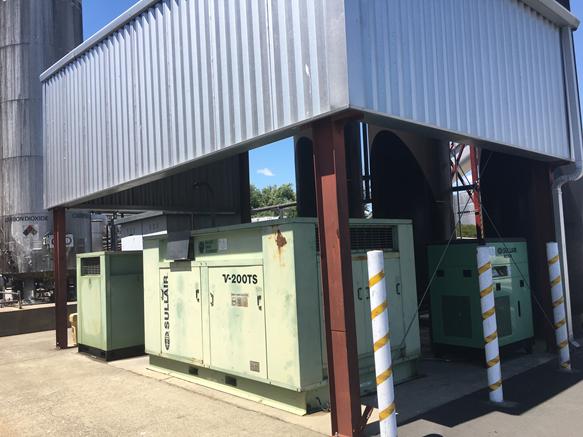
Wine production has grown rapidly in the past few decades—particularly in the United States—as consumer tastes continue to evolve. While the United States imports a great deal of wine, it is also one of the world’s largest producers with more than 9,000 wineries. Canada has nearly 600 wineries, and the market continues to grow about 4 percent per year.
While California is responsible for approximately 60 percent of the wine produced in the United States, the two fastest growing wine regions are the Mid-Atlantic seaboard and western states outside of California, such as Colorado and Arizona.
One thing in common at these wineries? Compressed air is an integral part of the winemaking process.
Compressed air is vital throughout the winemaking process, including:
The crush gets the grape juices flowing and is the first step of turning fresh grapes into wine. As the grape skins are broken, the juices mix with the grape skins, which absorb the flavor, colors, and tannins crucial for great tasting wine.
The crush involves sophisticated machines utilizing a high quantity of compressed air. The machine is comprised of a small compressor and air accelerator that begins the process of filling the air bladder that crushes the grapes.
Nitrogen is used to remove oxygen from bottles and tanks, as oxygen is very damaging to wine. Nitrogen is used to sparge tanks and displace oxygen during filling. Nitrogen is also put in bottles prior to filling, also known as sparging, and then a small amount is added after filling to ensure no oxygen is present before corking.

In mixing and blending, pulses of air are released at the bottom of the tank. Large, flat bubbles are formed, rising to the surface and creating a vertical mixing action. As bubbles break the surface, they push liquids across the top and down the sides, completing the circulation.
Sparging uses nitrogen forces to remove unwanted air from the wine bottles. In this process, the bottles are turned upside down. An initial blast of air removes any particles. As the bottles are rotated upright, they are filled with nitrogen to purge out oxygen, which is harmful to the wine.
After filling it, the bottle travels to a corking machine (corker) where the cork is compressed and pushed into the neck of the bottle. While this happens, the corker vacuums the air out of the bottle, removing any remaining oxygen.
After filling and corking, a plastic or tin capsule is applied to the neck of the bottle. The bottle then enters a labeler, where the wine label is applied. The product is then packed into boxes and is ready for shipment to homes and establishments around the world. Many of the bottling lines use compressed air for instrumentation and actuation.
Historically many wineries used oil-flooded industrial air compressors with filtration. Today, a growing number of wineries are instead opting for oil free compressor solutions to mitigate the risks of oil contamination in their product. Either way, whether choosing oil free or oil-flooded air compressors, a dependable compressed air solution is paramount to the winemaking process.
Use the checkboxes to select the types of cookies you want to accept, then press the “Save Settings” button. View our Privacy Policy.